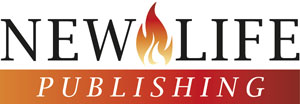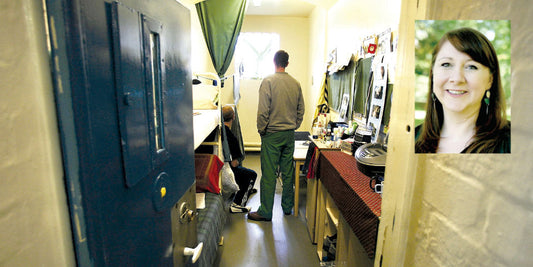
How Hannah More pushed Sunday schools forward
Share
Opponents warned Sunday schools ‘desecrated the Sabbath’ and that teaching the common people to read risked stirring up a French-style revolution
An early pioneer of Sunday schools was Hannah More. Born in 1745 in Bristol, Hannah went to school when she was twelve and later became a teacher at the same school. At an early age she discovered a facility in penmanship and spent a long time writing plays, poems and other literary works.
Having moved to London in 1774, she met up with John Newton, William Wilberforce and other members of the so-called ‘Clapham Sect’, a group of 18th century Church of England social reformers based in Clapham, London.
Hannah became a close friend of Wilberforce and it was he, after her return to Somerset in 1789, who suggested that she start a Sunday school.
Although the area was rural, it still faced the problems of poverty, illiteracy and spiritual ignorance that Raikes had found in the city of Gloucester. And so, having rented a barn for the school to meet in and a house for the school mistress, Hannah and her sister Martha opened their first school in Cheddar.
The idea caught on and during the next ten years, twelve more schools were opened in the villages around, with most of the money required to start them given by members of the Clapham Sect. Hannah More herself used her literacy skills to write a book called ‘Hints on How to Run a Sunday School’ in which she said that programmes had to be planned and suited to the level of the students. There also needed, she said, to be variety in education with classes as entertaining as possible, including singing!
Educating children
Hannah argued that it was possible to get the best out of children if their affections were engaged by kindness, something that ran at odds with the general contemporary view of educating children. However, she was under no illusion about human nature: “I believe that children are not innocent beings, rather as beings of a corrupt nature and evil dispositions,” she said, and the cure for that nature, she believed, was the gospel.
Hannah More’s children received prizes for coming along to Sunday school – a penny if they came four Sundays on the trot; and once a year she distributed little books for good work and behaviour. In addition to her work with the children, she also started meetings at the schools on week-night evenings for young people and adults. At these classes they were not only taught literacy but also knitting and sewing.
Inspired by the example of the likes of Raikes and More, over the next 50 years many Sunday schools were started, including one in Stockport, reputed to be the largest Sunday school in the world. This had 5,244 children in 1833 and, like the Raikes Sunday schools, used the Bible as the school book. It had its own large building (opened in 1805) and was supported by subscription from local businesses and individuals. Its annual income was an enormous £1,000 (about £90,000 today) and it was run by its own committee and even had the patronage of her majesty Queen Victoria!
Although Sunday schools were mainly started by churches of various denominations, one independent who deserves notice is William Fox, a London draper and member of Prescott St Particular Baptist Church. In 1785, with some friends, Fox established ‘the Society for the Establishment and Support of the Sunday School’. This was later to be called the Sunday School Union.
Sabbatarian disputes
Of course, like any innovation, Sunday schools did not go unopposed. To many land and factory owners, and even some in the religious establishment, the very thought that the lower classes were learning to read sparked off fears of a French-style revolution. Other criticisms included the claim that Sunday schools would weaken home-based religious education, that they might be a ‘desecration’ of the ‘Sabbath’, and that Christians should not be ‘employed’ on the Sabbath.
Even some leading churchmen – among them Bishop Samuel Horsley – opposed them on the grounds that they might become subservient to purposes of political propagandism. Indeed, ‘Sabbatarian disputes’ in the 1790s led many Sunday schools to cease their teaching of writing.
Notwithstanding all this, the Scottish economist and philosopher Adam Smith gave the movement his strongest commendation: “No plan has promised to effect a change of manners with equal ease and simplicity since the days of the Apostles.” And as people began to see the good effects Sunday schools were having within their communities, opposition began to decline.
The highest numbers of children attending Sunday school were from around 1870 until the end of the 19th century, when compulsory education was brought in for children aged five to ten to attend a day school. With state sponsored education, the focus of Sunday schools shifted from general to religious education.
It is a point worth mentioning that two of the greatest preachers of the Victorian era, Charles Spurgeon in England and DL Moody in America, both began their ministries as Sunday school teachers. Moody had a Sunday school of over 1,000 in Chicago while Spurgeon’s Metropolitan Tabernacle in London eventually had 1,000 children in regular attendance, another 150 in the senior class, 700 in the young women’s Bible class and a further 1,000 children in the branch Sunday schools!
Just how many other ministers, Christian leaders, missionaries and faithful Christian disciples, learned the faith through the work of Sunday schools only eternity will reveal. And when the rewards in heaven are handed out, no doubt many Sunday school teachers, who faithfully and patiently taught the Scriptures to sometimes troublesome and unwilling pupils, will – with people like Robert Raikes and Hannah More – be at the front of the queue!




